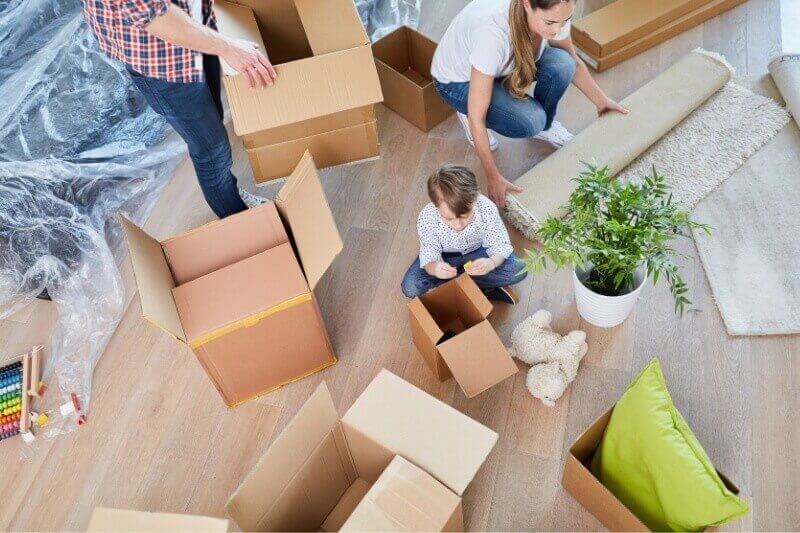
Prefer not to leave your phone number?
No problem!
Schedule an Appointment at your Convenience
(Only email is required)
Schedule an AppointmentOr Call Now
844-545-1881By: Last Updated: Jan 01, 2025
Are you planning a move? If the answer is yes, you’ll need to calculate the total number of boxes needed to move all of your belongings from your old house to your new home.

This may seem like a simple, easy task that should take no longer than five minutes. Just look at your items and make a rough estimate right? Well, there’s a bit more that goes into it.
To calculate the total number of boxes you’ll need, you first need to measure the square footage of your current home, then determine which box size you’re going to use (small, medium, large, or extra-large), then determine the total number of boxes you’ll need.
To determine the total number of boxes needed, we recommend using this simple formula: (Number of items that need to be packed x the size of the box) divided by the volume of the box = the total number of boxes needed.
The first step in this process is to measure the total square footage of the home you’ll be moving out of. To do this properly, you’ll need a tape measure, ruler, or a measuring wheel.
Follow these three simple steps to accurately measure a space in your home:
After you’ve gone through the often painstaking, but necessary task of measuring your whole house, the next step is to determine what size of boxes you’ll need.
The most common box sizes are as follows:
When deciding which box size to go with for your move, there’s a few things to consider. One of the most common mistakes first time movers make is buying all extra-large boxes and trying to stuff as many items in them as possible.
However, it’s important to consider the following factors when deciding which size boxes to order.
Many common household items don’t pack well together. Items such as delicate dishes combined with books.
The list could go on forever, which is why it’s so important to consider these factors when ordering boxes for items in your home.
Depending on the various items in your house, you’ll want to order different box sizes. Follow this simple guide to determine which box sizes you’ll need.
There’s a simple formula to follow when calculating the total number of boxes for your move.
(Number of items that need to be packed x the size of the box) divided by the volume of the box = the total number of boxes needed.
You’ll need to bring everything into consideration when calculating the total number of boxes you’ll need because you won’t be ordering one type of box, and everyone’s home is different.
We recommend that you go room by room and decide which boxes will be needed for the items relevant to that room.
No, having extra space in your boxes is actually great – if used properly. Anytime you have extra space in your boxes, look at it as an opportunity to put padding or bubble wrap around your items to protect them during transport.
Having a bit of extra room will also help protect your boxes from cracking and breaking due to being overpacked.
Since ordering boxes can be a complete and total guessing game without the right guidance, we hope this article provided a helpful guide and left no questions unanswered for your next move.
It’s always best to double-check your measurements, total item weight, and calculations from the formula to get the most accurate result possible.